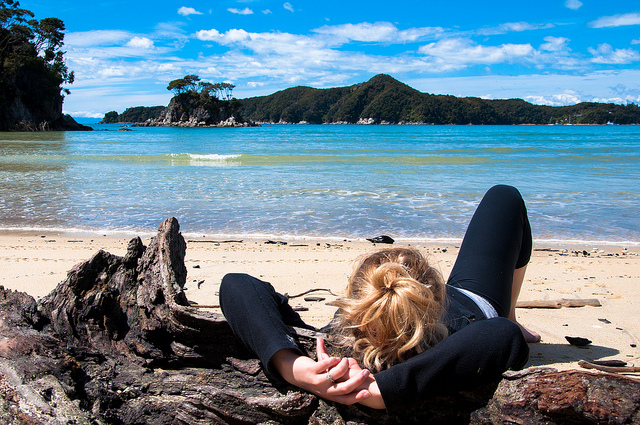| Online: | |
| Visits: | |
| Stories: |

| Story Views | |
| Now: | |
| Last Hour: | |
| Last 24 Hours: | |
| Total: | |
Why We Stay Busy When We’re Not and The Benefits of Doing Nothing

“Doing nothing is better than being busy doing nothing.” ~Lao Tzu
How many times in a day do you tell yourself you are busy and have too much to do? In a week? In a month?
How many of those times are you actually busy doing “nothing”? You know the “nothing” that I am talking about—the nothing that means you are watching hours of mindless TV, roaming the internet, or playing a game that you can’t seem to tear yourself away from on your smartphone.
I’ve been there and done that, and I still do it sometimes. I know what it’s like to feel drained and tired andwant a break from real life for a bit so that you can recharge and refresh yourself.
And I know what it’s like to choose to tune out/zone out/disconnect instead and how that ends up causing you to feel even more worn out and overwhelmed than before you took that so-called break to do “nothing” for a while.
We tell ourselves that it’s okay to do “nothing” and that we deserve some downtime, but we really don’t believe it and that is why we choose to occupy that time with activities that don’t allow us to recharge. We want others to believe that we are as busy as they are, so we distract ourselves with those mindless tasks.
I resisted “doing nothing” on its own for a long time without realizing it. I tried to do it while reading a book and watching TV and texting friends (yes all at the same time) and I burnt myself out.
I couldn’t focus anymore and I had trouble completing my work when I needed to.
I told everyone that I was busy and stressed out, but I really wasn’t doing what I was supposed to be doing and my workload was getting larger and the quality of my work was decreasing, all because I wouldn’t give myself permission to take a genuine break and “do nothing.”
It wasn’t until I left a stressful work situation and took some time to travel in South America for a few months that I learned the difference between being busy “doing nothing” and just “doing nothing.”
It was there that I was challenged to just be, as I was traveling by myself, didn’t have any work to bury myself in, and there was no TV or phone to distract myself with.
It was scary at first to be alone with my own thoughts and feelings and I actually felt anxious, as I experienced sadness, anger, and worry without any way to divert my attention from them. However, as those feelings came up I was able to deal with them and release them, and that was what allowed me to feel rested and recharged.
Even better, when you stop distracting yourself, you also get to enjoy your comfortable feelings such as excitement, happiness, and joy on a more intense level.
Now you don’t have to leave your job and travel to South America to learn how to just do nothing; there are ways to experience this in our everyday life.
For example, we don’t give ourselves permission to take a walk in the park and notice the changing leaves. Instead, we check in with a friend or work on the cell phone and let them know we are busy “exercising.”
We don’t give ourselves permission to enjoy a cup of coffee or a glass of wine with a friend as we talk about how grateful we are for what we have. Instead, we meet with a friend after months of trying to schedule something and end up trying to compete over who is the most overwhelmed.
We don’t give ourselves permission to have fun at the beach with our family where the only thing we should worry about is remembering to put sunblock on. Instead, we get annoyed by our kids who want to play with us while we try to read “that book” that everyone is raving about that we have no interest in but feel like we are supposed to read.
Source: http://truthisscary.com/2014/03/why-we-stay-busy-when-were-not-and-the-benefits-of-doing-nothing/



